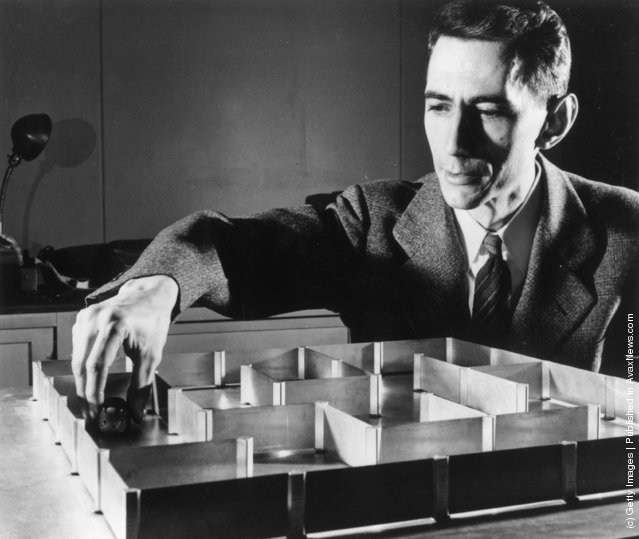
Dr. Claude E Shannon a mathematician at the Bell Telephone Laboratories with an electronic mouse which has a “super” memory and can learn its way round a maze without a mistake after only one “training” run. (Photo by Keystone/Getty Images)
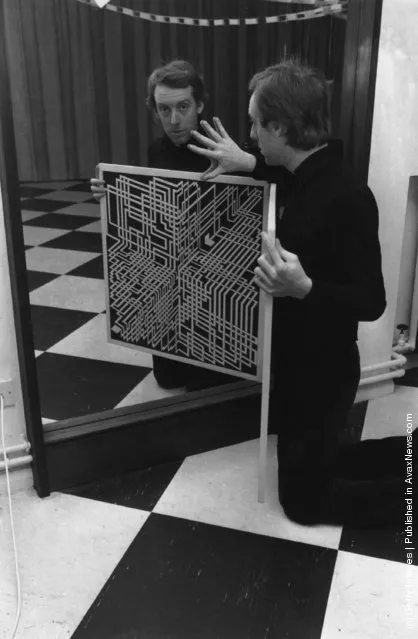
The designer of the world's largest maze, situated at Longleat, Guy Bright. (Photo by Keystone Features/Getty Images). Circa 1980
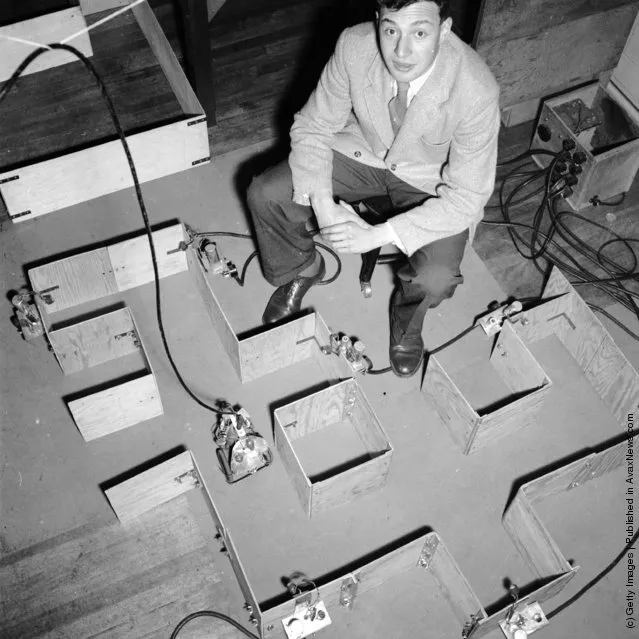
A scientist at Oxford with a mechanical device known as the Oxford “Rat” which is finding its way through a makeshift wooden maze. (Photo by Werner Rings/BIPs/Getty Images). December 1955
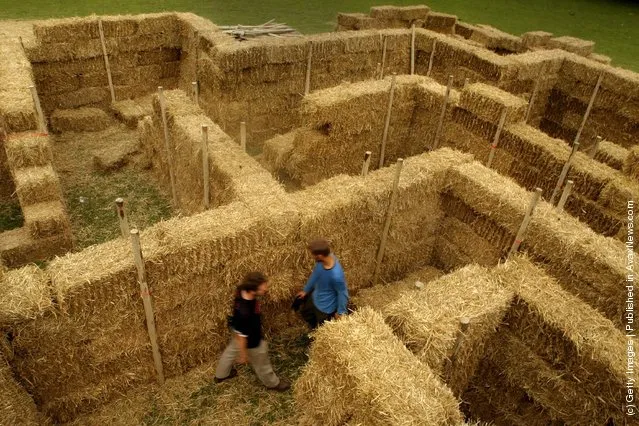
People walk through a maze made from bales of straw, built by the charity Action Aid August 30, 2002 in Highbury Fields in London. The maze illustrates the maze of problems facing third world farmers, as they compete against western government subsidies on crops such as wheat, an issue raised during the current Johannesburg Earth Summit. (Photo by Sion Touhig/Getty Images)
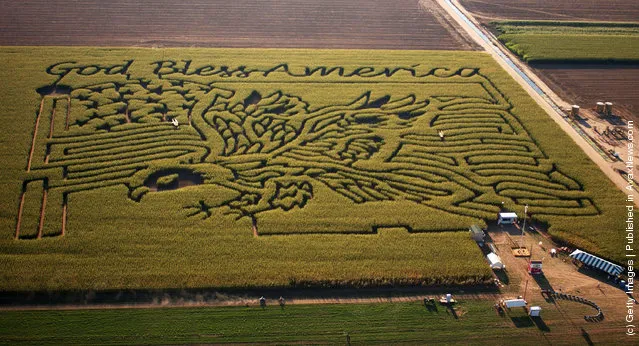
Glen Fritzler's 14-acre corn maze in the shape of an eagle and “God Bless America” is seen September 2, 2002 near LaSalle, Colorado. The eagle-shaped maze, created by farmer Glen Fritzler, has up to two miles of pathways and 85 decision points on the way to the exit. (Photo by Kevin Moloney/Getty Images)

A giant maze is opened to the public in Trafalgar Square on August 2, 2010 in London, England. The maze was created by the West End partnership to encourage visitors to get lost in the West End. (Photo by Dan Kitwood/Getty Images)
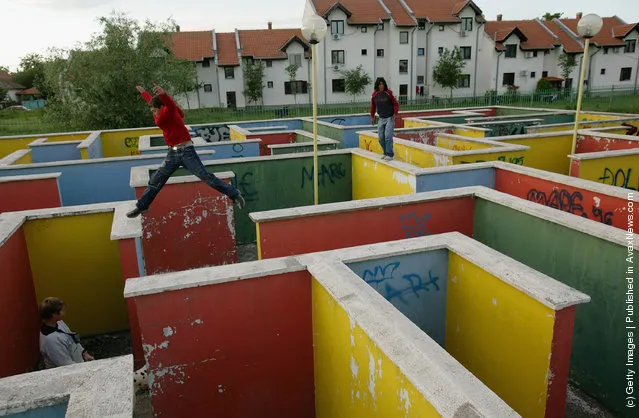
Children play in the maze section of the abandoned Bambiland fun park on May 9, 2008 in Pozarevac, Serbia. (Photo by Daniel Berehulak/Getty Images)

Likenesses of President Bush and his opponent in the November general election, U.S. Sen. John Kerry of Massachusetts are shown carved into a Utah corn field September 20, 2004, in Pleasant Grove, 30 miles south of Salt Lake City, Utah. The maze, part of HeeHaw Farms, which hosts the annual event, challenges visitors with questions in American history and presidential elections. Correct answers help lead visitors to the exit of the three miles of paths, while incorrect answers lead them astray. (Photo by George Frey/Getty Images)
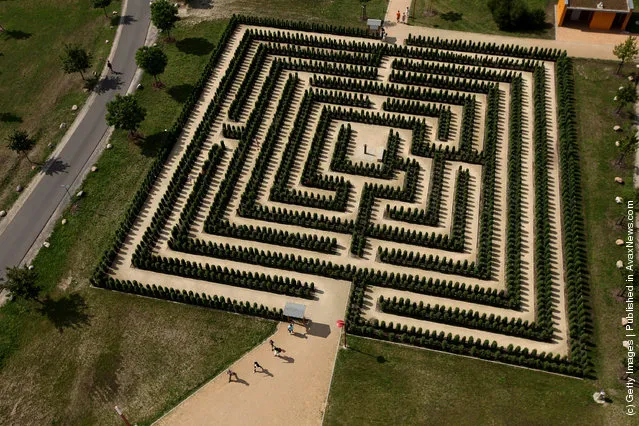
People leave a maze at the Teichland amusement park August 10, 2010 near Jaenschwalde, Germany. The park opened in 2008 and is part of a broader effort by local authorities to make the region, which is blighted by open-pit lignite coal mines, more attractive to tourists. (Photo by Sean Gallup/Getty Images)

Takara Tomy's world's smallest two-leg walking robots “ROBO-Q” walk in a maze during the Robo_Japan 2008 Press Preview at Pacifico Yokohama on October 10, 2008 in Yokohama, Kanagawa, Japan. At 3.4cm high, ROBO-Q is able to walk by following an object and avoiding contact with obstacles. It also works using a remote control. (Photo by Junko Kimura/Getty Images)
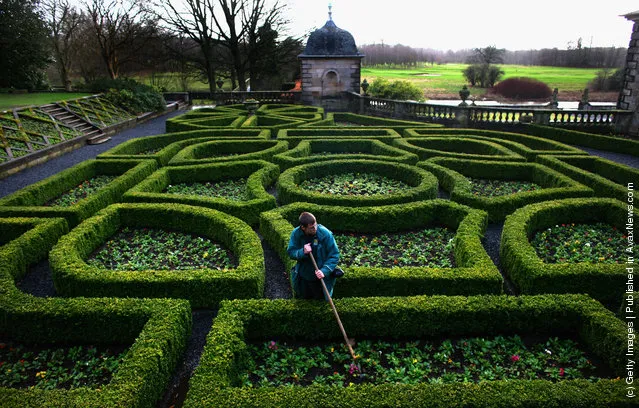
Derek MacKay tends to a garden at Pollok Country Park February 26, 2008 in Glasgow, Scotland. The park has been named Europe's best park for 2008 by Briggs and Stratton who created the competition during the 1990s to promote appreciation for public parks and gardens. (Photo by Jeff J Mitchell/Getty Images)
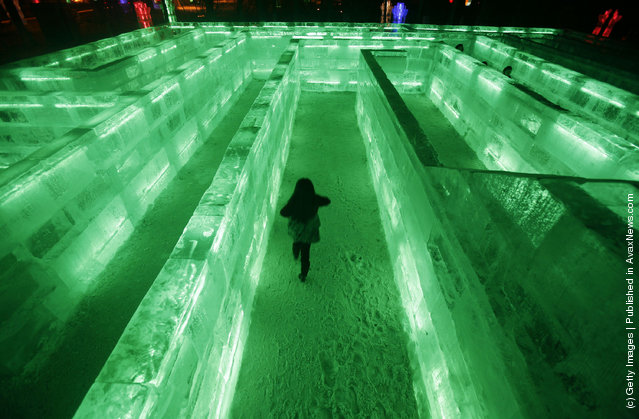
A girl navigates an ice maze at the fourth Snow and Ice Tourism Fair held to usher in the Chinese New Year of Ox on January 20, 2009 in Xining of Qinghai Province, China. (Photo by China Photos/Getty Images)
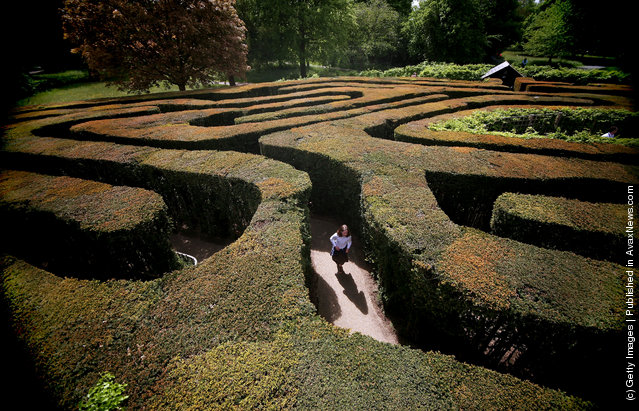
A young girl navigates her way around Hampton Court maze in the spring sunshine on May 2, 2009 in London, England. The Hampton Court maze is one of the most famous hedge mazes in the world and was planted between 1689 and 1695 by George London and Henry Wise. (Photo by Dan Kitwood/Getty Images)
12 Jun 2011 09:31:00,
post received
0 comments
